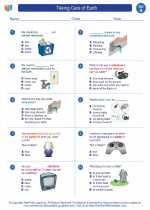Waves: An Introduction
Waves are a fundamental concept in physics and can be found in various forms in nature. A wave can be described as a disturbance that travels through a medium, transferring energy from one point to another without transferring matter. There are many different types of waves, including mechanical waves, electromagnetic waves, and more.
Types of Waves
1. Mechanical Waves: These waves require a medium, such as water or air, to travel through. Examples include sound waves and seismic waves.
2. Electromagnetic Waves: These waves do not require a medium and can travel through a vacuum. Examples include light waves, radio waves, and X-rays.
Properties of Waves
Waves have several important properties, including:
1. Amplitude: The maximum displacement from the rest position of a wave.
2. Wavelength: The distance between two corresponding points on a wave, such as two crests or two troughs.
3. Frequency: The number of complete wave cycles that pass a given point per unit of time.
4. Speed: The rate at which a wave travels through a medium.
Wave Behavior
Waves exhibit several interesting behaviors, including:
1. Reflection: When a wave encounters a boundary, it can bounce back.
2. Refraction: The bending of a wave as it passes from one medium to another.
3. Diffraction: The bending of waves around obstacles and the spreading of waves as they pass through openings.
Study Guide
To better understand waves, consider the following study guide:
1. What are the different types of waves, and how do they differ from one another?
2. What are the key properties of waves, and how are they measured?
3. How do waves behave when they encounter boundaries, obstacles, or different mediums?
4. Provide examples of waves found in everyday life and explain their characteristics.
5. Explore the applications of waves in various fields, such as communication, medicine, and technology.
By exploring these questions and concepts, you can gain a deeper understanding of the fascinating world of waves.
[Waves] Related Worksheets and Study Guides:
.◂Science Worksheets and Study Guides First Grade. Taking Care of Earth

 Worksheet/Answer key
Worksheet/Answer key
 Worksheet/Answer key
Worksheet/Answer key
 Worksheet/Answer key
Worksheet/Answer key
 Vocabulary/Answer key
Vocabulary/Answer key
 Vocabulary/Answer key
Vocabulary/Answer key
